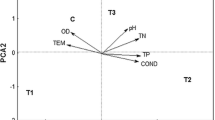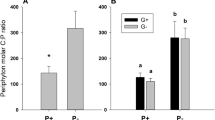Abstract
This study presents model experiments on the effect of the spatial pattern of herbivory on primary producer diversity. Microalgal biofilms (periphyton) were exposed to different mixtures of two benthic herbivores, the isopod Idothea chelipes and the gastropod Littorina littorea. The herbivores are similar in their feeding selectivity but differ strongly in the spatial pattern of grazing. Idothea did not increase the spatial heterogeneity of algal cell densities beyond the level of ungrazed controls (<1 order of magnitude between local minima and maxima at the 1 mm2 scale). Littorina grazing, in contrast, created a pronounced spatial heterogeneity with maximum:minmum ratios of almost 3 orders of magnitude. When algae were exposed to mixtures of both gazers, the spatial heterogeneity of microalgal cell densities increased with an increasing proportion of Littorina in the herbivore mixture. Algal species richness, diversity and evenness also increased with increasing proportions of Littorina, and was highly significantly correlated with the spatial heterogeneity of cell densities.
Similar content being viewed by others
Author information
Authors and Affiliations
Additional information
Received: 25 May 1999 / Accepted: 14 September 1999
Rights and permissions
About this article
Cite this article
Sommer, U. Benthic microalgal diversity enhanced by spatial heterogeneity of grazing. Oecologia 122, 284–287 (2000). https://doi.org/10.1007/PL00008857
Issue Date:
DOI: https://doi.org/10.1007/PL00008857




